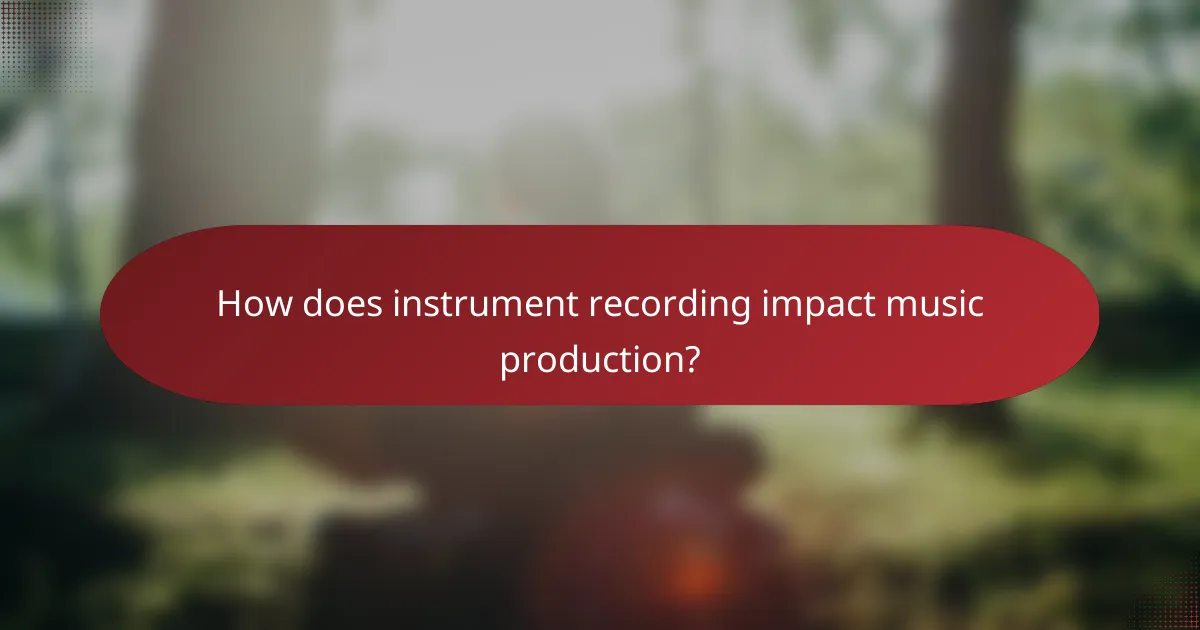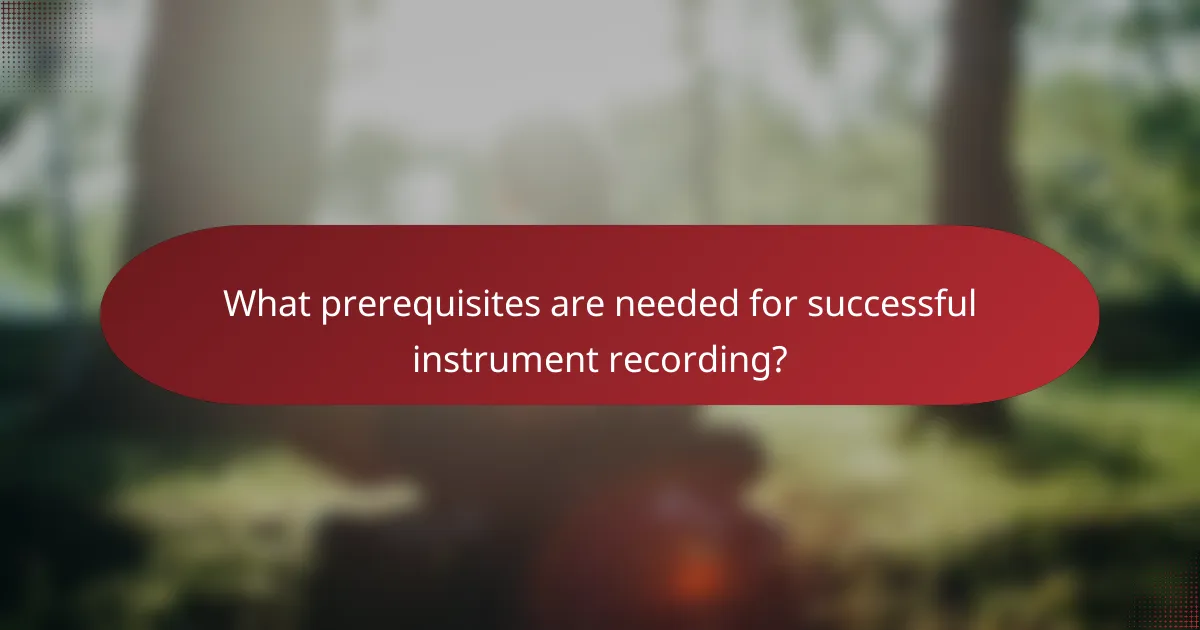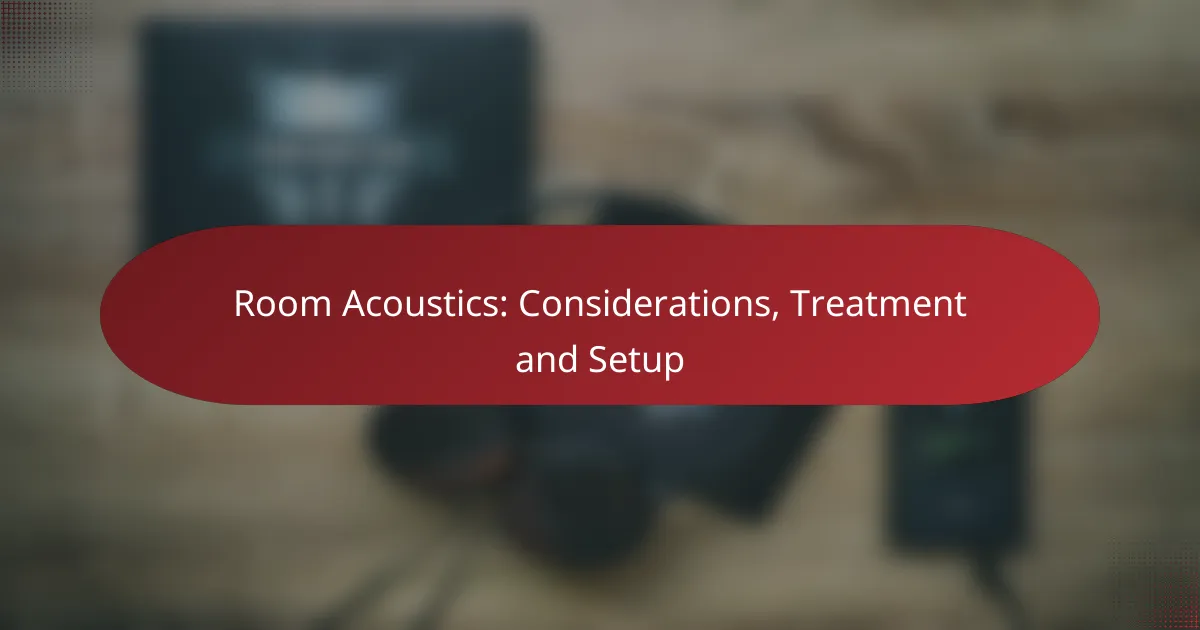Instrument recording is a crucial aspect of music production that involves various techniques to achieve high-quality sound. By optimizing microphone placement and layering, producers can enhance the clarity and depth of a track, ultimately shaping its emotional impact and listener engagement. Additionally, effective arrangement of recorded instruments ensures a balanced mix, allowing each element to contribute meaningfully to the overall sound.

What are effective instrument recording techniques?
Effective instrument recording techniques focus on achieving high-quality sound by optimizing microphone placement, layering, and using effects. These methods enhance the overall audio experience, ensuring clarity and depth in the final mix.
Microphone placement strategies
Microphone placement is crucial for capturing the best sound from instruments. Consider the distance and angle of the microphone relative to the sound source; closer placement often yields a more direct sound, while further distances can capture room ambiance. Experimenting with different positions can reveal unique tonal qualities.
A common technique is the “three-to-one rule,” which suggests placing microphones three times the distance apart from each other as they are from the sound source to avoid phase issues. For instance, if a microphone is one meter from a guitar, the other should be at least three meters away.
Layering instruments for depth
Layering involves recording multiple takes of the same instrument or combining different instruments to create a fuller sound. This technique adds richness and complexity, making the mix more engaging. For example, layering several guitar tracks can create a lush, stereo effect.
When layering, ensure that each track has a distinct role, such as rhythm, melody, or harmony. This differentiation helps maintain clarity and prevents the mix from becoming muddy.
Using effects for enhancement
Effects like reverb, delay, and compression can significantly enhance recorded instruments. Reverb adds space and depth, while delay can create interesting rhythmic textures. Use these effects judiciously to avoid overwhelming the original sound.
For instance, applying a subtle reverb on a vocal track can make it feel more natural in a mix, while a heavier delay on a guitar can create a more atmospheric sound. Always listen critically to ensure effects complement rather than detract from the performance.
Recording in different environments
The recording environment influences the sound quality significantly. A treated studio space offers controlled acoustics, while a live room can add natural reverb and character. Choose your environment based on the desired sound; for example, a wooden room can enhance warmth for acoustic instruments.
When recording in less-than-ideal spaces, consider using soundproofing techniques or portable isolation booths to minimize unwanted noise. This approach helps maintain clarity and focus in the recordings.
Mixing techniques for clarity
Mixing is essential for achieving clarity in recorded instruments. Techniques such as EQ (equalization) help carve out space for each instrument in the frequency spectrum, ensuring they don’t compete for attention. For example, reducing low frequencies on a vocal track can prevent muddiness in the mix.
Additionally, panning instruments across the stereo field can create a sense of space and separation. A common practice is to pan rhythm guitars slightly left and right while keeping the lead guitar centered, which enhances the overall balance and clarity of the mix.

How does instrument recording impact music production?
Instrument recording significantly influences music production by shaping the overall sound, texture, and emotional response of a track. The techniques used in recording can enhance sound quality, affect listener engagement, and help differentiate genres.
Influence on sound quality
The quality of instrument recording directly affects the clarity and richness of the final mix. High-quality microphones, proper placement, and suitable recording environments can capture the nuances of each instrument, resulting in a more polished sound. For instance, using a condenser microphone for vocals can yield a brighter tone compared to a dynamic microphone.
Additionally, employing techniques like multi-tracking allows for greater control over each instrument’s presence in the mix. This method enables producers to adjust levels, apply effects, and create a balanced soundscape that enhances the listening experience.
Effect on listener engagement
Effective instrument recording can significantly enhance listener engagement by creating an immersive experience. Techniques such as panning, reverb, and layering can draw listeners into the music, making them feel more connected to the performance. For example, a well-recorded guitar solo that uses spatial effects can evoke strong emotions and keep the audience captivated.
Moreover, the arrangement of recorded instruments can influence how listeners perceive the energy and dynamics of a track. A carefully crafted build-up with recorded instruments can lead to impactful climaxes that resonate with the audience.
Role in genre differentiation
Instrument recording plays a crucial role in distinguishing musical genres by defining their unique sound characteristics. Different genres often employ specific recording techniques and instrumentation to create their signature styles. For example, the crisp, clean sound of pop music contrasts with the raw, gritty tones found in rock or punk.
Producers often use genre-specific recording methods, such as the use of vintage equipment in jazz or electronic elements in hip-hop, to reinforce these distinctions. Understanding these nuances can help aspiring musicians and producers make informed decisions about their recording techniques to align with their desired genre.

What are the best practices for arranging recorded instruments?
Effective arrangement of recorded instruments involves balancing frequencies, creating dynamic contrasts, and utilizing space and silence. These practices enhance the overall clarity and impact of the music, ensuring that each instrument contributes meaningfully to the final mix.
Balancing frequencies in the mix
Balancing frequencies is crucial for achieving a clear and cohesive sound in your arrangement. Each instrument occupies a specific frequency range, and it’s important to ensure that these ranges do not clash. Use equalization (EQ) to carve out space for each instrument, typically focusing on the low, mid, and high frequencies to prevent muddiness.
A common approach is to apply a high-pass filter on instruments that don’t need low-end presence, such as vocals and guitars, while allowing bass and kick drums to occupy the lower frequencies. Aim for a balanced mix where no single frequency range overwhelms the others, which can often be achieved by making subtle adjustments rather than drastic cuts.
Creating dynamic contrasts
Dynamic contrasts add interest and emotional depth to your arrangement. Varying the volume, intensity, and articulation of instruments can create a more engaging listening experience. For instance, consider using softer passages to highlight a vocal line, then building up to a fuller sound during the chorus.
Utilize techniques like automation to adjust levels throughout the track, ensuring that quieter sections feel intimate while louder sections convey energy. This approach not only keeps the listener engaged but also allows for a natural ebb and flow within the music.
Utilizing space and silence
Incorporating space and silence in your arrangement can significantly enhance its impact. Empty spaces allow the listener to absorb what they have just heard, creating a more thoughtful experience. Use rests strategically to give instruments room to breathe and to emphasize key moments in the track.
Consider the placement of instruments in the stereo field as well. Panning instruments slightly left or right can create a sense of space, making the mix feel wider and more immersive. Remember that silence can be just as powerful as sound; don’t be afraid to leave gaps in your arrangement for dramatic effect.

What prerequisites are needed for successful instrument recording?
Successful instrument recording requires a combination of proper equipment, understanding of acoustics, and a suitable recording environment. These elements ensure that the sound captured is clear, balanced, and true to the original performance.
Essential equipment checklist
To achieve high-quality recordings, you need essential equipment that includes microphones, audio interfaces, and monitoring headphones. A good microphone can range from a few hundred to several thousand dollars, depending on its type and quality.
Additionally, consider investing in a digital audio workstation (DAW) software for editing and mixing. Popular options include Pro Tools, Ableton Live, and Logic Pro, which cater to various budgets and skill levels.
Finally, don’t overlook accessories such as microphone stands, pop filters, and cables. These items, although often seen as secondary, can significantly impact the recording quality.
Understanding acoustics
Acoustics play a crucial role in instrument recording, as they determine how sound behaves in a space. Factors such as room size, shape, and surface materials can affect sound reflection and absorption, influencing the final recording quality.
To optimize acoustics, consider using soundproofing materials like foam panels or bass traps to minimize unwanted echoes and background noise. A well-treated room can enhance clarity and depth in recordings.
Additionally, experimenting with microphone placement can yield different tonal qualities. For example, placing a microphone closer to an instrument captures more detail, while positioning it further away can create a more ambient sound. Adjusting these variables can help achieve the desired recording outcome.

What are common mistakes in instrument recording?
Common mistakes in instrument recording can significantly affect the quality of the final product. Key errors include poor microphone selection, improper placement, and neglecting room acoustics, all of which can lead to subpar sound capture.
Poor microphone selection
Poor microphone selection can drastically impact the recording quality of instruments. Different microphones have unique characteristics, such as frequency response and sensitivity, which can either enhance or detract from the sound being recorded.
When choosing a microphone, consider the instrument type and the sound you want to achieve. For instance, dynamic microphones are often preferred for loud sources like drums, while condenser microphones are better suited for capturing the nuances of vocals or acoustic guitars.
To avoid mistakes, test several microphones with the instrument before finalizing your choice. Keep in mind that using the wrong type can lead to a muddy or overly bright sound, so it’s crucial to match the microphone to the instrument’s characteristics for optimal results.










